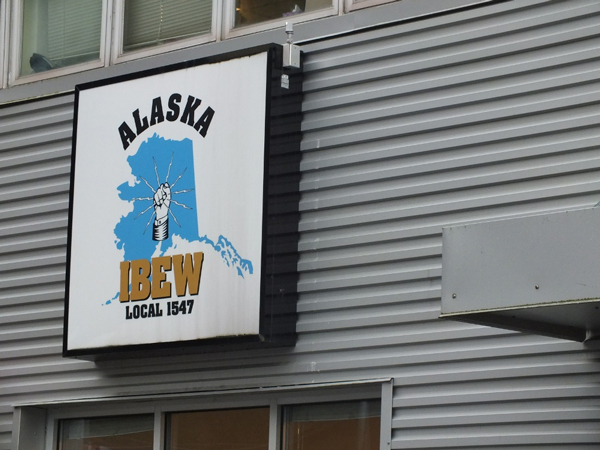
Nearly half of all states have right-to-work laws that prohibit contracts between employers and labor unions requiring workers to pay union dues.
Alaska is not one of them. But with a Republican dominated legislature and executive branch, it is seen as a state where right-to-work legislation could pass. No bills have been introduced here since 2011, and the issue does not seem to be a priority for business or political groups.
On the other hand, labor groups remain concerned about right-to-work and other efforts to thwart collective bargaining, as evidenced by a union sponsored training this week in Juneau attended by members of about a dozen local unions.
Gordon Lafer is a professor at the University of Oregon’s Labor Education and Research Center and an associate with the Economic Policy Institute in Washington, D.C. He’s studied the impact of right-to-work laws around the country and has an idea about how one would play out in Alaska.
“To cut to the chase, the impact would be to lower wages and benefits for both union and non-union workers, but not to do anything to draw jobs to the state,” he says.
Proponents of right-to-work laws often sell them as a way to increase employment in a particular area. But Lafer says the real goal is to weaken unions and workers’ rights in general. A study done by his colleagues at the Economic Policy Institute shows full-time employees in right-to-work states make about $1,500 less per year than employees in non-right-to-work states, regardless of whether they belong to a union. He also says workers are less likely get health insurance through their job in right-to-work states.
“The idea of right to work is to lower wages and benefits in hopes of drawing more manufacturers into the state,” Lafer says. “Because theoretically that’s why they would come, is because it’s cheaper because people make less.”
Lafer admits he’s not an expert on Alaska’s economy, but says it’s hard to believe manufacturers would flood to a state with such high transportation and shipping costs if right-to-work were enacted. Currently, manufacturing accounts for only about 4 percent of all jobs in the state, according to the Alaska Department of Labor and Workforce Development.
“On the flip side, the things that are here and are the big industries, which is mining, oil, tourism, seafood, and government employment including the military, like, those things aren’t going anywhere,” Lafer says. “They’re here because of the natural resources of the state, and the real question is not how to get them here, but whether those are going to be decently paying jobs or crappy jobs.”
Local labor groups brought Lafer to Juneau this week to give union members a primer on right-to-work issues.
Alaska Public Employees Association Business Manager Doug Swanson moved to the Capital City about a year ago from Wisconsin, where he saw firsthand how quickly anti-union legislation can be adopted. It took less than a month for the Wisconsin Legislature to approve Governor Scott Walker’s bill restricting public employee bargaining rights. Swanson says the same thing could happen in Alaska.
“The trend right now nationally is to whittle away at the rights workers have, regardless of what state you’re in, blue state or red state,” Swanson says. “And so, yeah, I’m worried that if we wait, we’re just going to be forever watching an erosion of the working class.”
In many states, chambers of commerce are the ones pushing for right-to-work laws, but not in Alaska – at least not yet. Ryan Makinster, Communications Director for the Alaska State Chamber, says the issue didn’t even come up at the organization’s recent legislative policy forum. Juneau Chamber of Commerce CEO Cathie Roemmich, who serves on the U.S. Chamber’s Committee of 100, says right-to-work is not on her radar.
The last time right-to-work was introduced in the Alaska Legislature was 2011, when a bill by the late Republican Representative Carl Gatto went nowhere.
Rodney Hesson is the Assistant Business Manager for the International Brotherhood of Electrical Workers Local 1547 in Juneau. He says even though right-to-work does not appear to be a priority for business or political groups in the state, it remains a concern for unions.
“Right-to-work has been introduced previously. So this is just an ongoing conversation,” Hesson says. “And having more facts – reliable facts – to have a decent conversation about what we’re really talking about, that’s the main reason I’m here.”
In 2012, Alaska ranked second nationally behind New York in the percentage of its workforce covered by a union.
The right-to-work training was sponsored by the Juneau Central Labor Council, the Juneau Building Trades, and the American Federation of Teachers.
Casey Kelly is a reporter at KTOO in Juneau.




